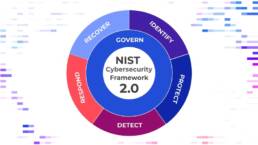Nowadays, cybersecurity plays a big role in protecting a company. But we know most people are not experts in this field and may find it overwhelming to know where to start, and that’s when a cybersecurity risk assessment comes in
Simply put, a cybersecurity risk assessment will allow you to measure any risk related to your information security. It will also help you understand exactly how vulnerable your systems are and what steps are needed to fight cyber threats. In this blog, we will cover a more in-depth definition of cybersecurity risk assessment, how to measure it, and how companies conduct this type of assessment.
What Is Cybersecurity Risk Management?

Cybersecurity risk management identifies, assesses, and mitigates cybersecurity threats to ensure they are within an acceptable threshold. This process protects the organization’s data and systems from unauthorized access, use, disclosure, disruption, or destruction.
The process of cybersecurity risk assessment involves identifying, analyzing, and evaluating risks to ensure that the chosen security measures match the dangers faced by the organization. You may save time, effort, and resources by conducting a risk assessment before making cybersecurity decisions. It’s not worth putting measures to protect against unlikely events or events that won’t affect your organization specifically.
What Does a Cyber Security Risk Assessment Include?
During a risk assessment, different information assets that may be at risk from a cyber-attack (e.g., hardware, systems, laptops, customer data, intellectual property) are identified, and the potential risks to those assets are determined.
The standard process for managing risks involves evaluating and estimating potential risks, then selecting controls to manage those risks. Keeping a close eye on any changes in the organization’s context and regularly reviewing the risk environment is crucial to maintaining an effective risk management process.
How to Measure Anything in Cybersecurity Risk?
A cybersecurity risk assessment can be split into many parts, but the five main steps are scoping, risk identification, risk analysis, risk evaluation, and documentation.
Scoping
This step consists of identifying the scope and objectives of risk assessment and defining what specific risks you want to assess. Scoping also includes deciding who will be involved and how to report the results.
Risk Identification
Once the scope is established, it’s time to identify potential risks to your organization. During this process, you will review processes and procedures and evaluate the internal and external threats. Identifying risk is a critical step, as it helps to identify the most significant risks and determine where additional resources should be allocated.
Risk Analysis
After identifying risks, it’s time to analyze them. This step looks at the likelihood of these risks occurring and the consequences if they did happen for your business. This step is important since it will help you prioritize risks and determine which ones are more serious and require more attention.
Risk Evaluation
Once you’ve identified and analyzed your organization’s risks, it’s time to evaluate them. This step involves assessing the level of risk posed by each identified threat and deciding on an appropriate course.
Documentation
It’s important to document all the steps taken during the assessment so that you can refer back to it if needed.
Why Do Companies Conduct Cybersecurity Risk Assessments?

Cybersecurity risk assessments are essential for organizations to help identify and mitigate risks. This can be beneficial in many ways, including reducing the potential financial losses caused by a cyber-attack, improving operational efficiency, increasing customer trust, and protecting an organization’s reputation.
By conducting regular risk assessments, organizations can ensure their systems are secure and current with the latest security measures. This helps prevent cyber-attacks, data breaches, and other malicious activity. It also allows organizations to identify any vulnerabilities in their systems so they can be patched before any damage is done.
Cybersecurity as a whole will help you ensure an organization remains secure and compliant with industry standards.
A Unique Cybersecurity Risk Management Company
Cybersecurity risk assessments are important for any organization to identify and mitigate risks. They involve identifying, analyzing, and evaluating potential risks to ensure that the chosen security measures match the risks the organization faces. Risk assessments help organizations stay secure and compliant with industry standards while reducing financial losses, operational efficiency, customer trust, and reputation.
At Zyston, we provide the most complete cybersecurity program management offering today. With our CyberCAST platform, organizations can measure anything in cybersecurity risk and quantify their organization’s specific risk.
Our team of experts is trained to provide the best services to enable you to build, operate, and mature an effective information security program. We strive to be your trusted partner in helping you stay secure and mitigate risks. Contact us today to learn more about CyberCAST and how to reduce your cyber-attacks!









